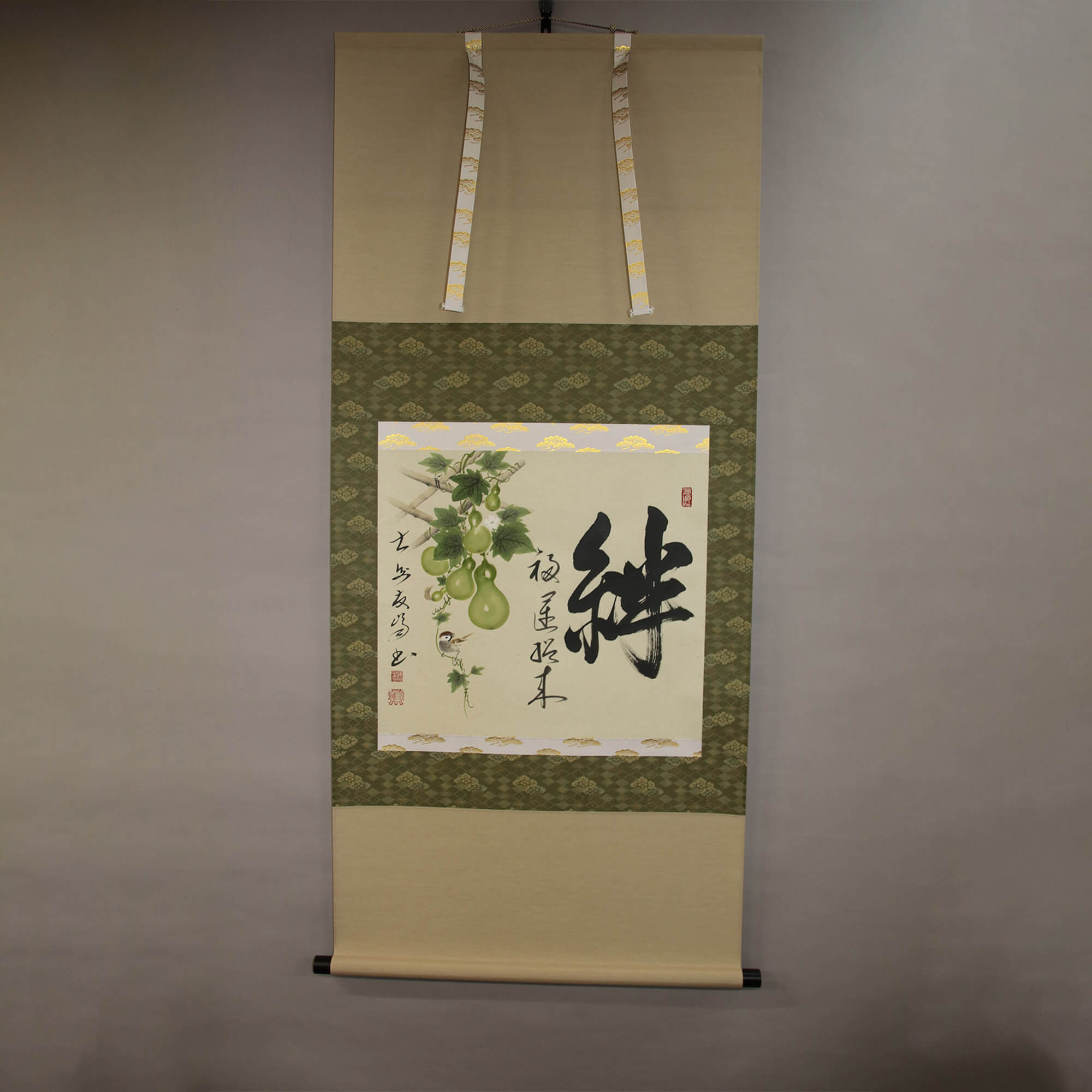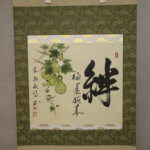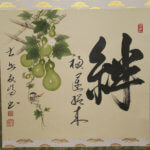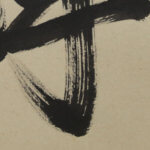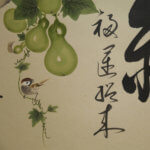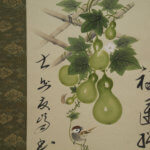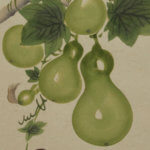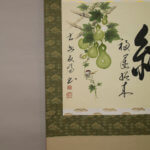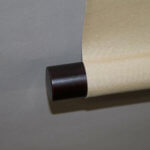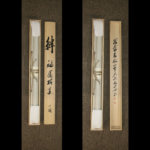Products Lineup
News / Blog
Other Menus
Kakejiku Hanging Scroll: Calligraphy: Bond & 6 Gourds / Takahashi Yūhō - Kizuna & Mubyō
- Product ID
- 0253
- Name
- Takahashi Yūhō
- Profile
The chief priest at the Daianzen-ji temple in Fukui pref.
1948
Born in Fukui city, Japan
1970
Graduated from the Kyoto Hanazono University (Major: Buddhism)
Joined and practiced asceticism at the Kaisei-ji temple in Hyogo for 6 years1989
Appointed as the chief priest at the Daianzen-ji temple in Fukui
2008
Exhibition at the Takumi museum in JR Gifu Station
Exhibition at the art gallery in Inoue department in Nagano2011
Opened a gallery in the Daianzen-ji temple
Also appointed as the chief priest at the Housyou-ji temple in Ishikawa
Exhibition at the “Gallery Metanoia” in Paris, France2014
Performed at the Sarah Lawrence College in NY, USA
- Size
- 690mm x 1430mm
- Roller End Material
Redsandalwood- Material of the Work
- Japanese paper
- Stock Condition
- Sold out
- Description
The Kanji character “kizuna” has become especially popular among Japanese people in recent years. Every year in December, a Kanji character is chosen as the “Kanji of the Year” by a public contest to be drawn by Mori Sēhan, the chief abbot of the Kiyomizu Temple in Kyōto. The character “kizuna” was chosen in 2011, the year of the Great East Japan Earthquake, which left many people emotionally traumatized. Behind the selection lies its reminding people of the importance of living together in despair, hand in hand, which has then come to be valued by the Japanese people.
The Kanji character for such “kizuna” was written by a modern Zen monk, Takahashi Yūhō. Next to the “kizuna” Kanji character is “Fukuun Shōrai (fortune inducing),” expressing Takahashi Yūhō’s message, “Cherish the bond between people and you’ll have good luck” in calligraphy. Next to the calligraphy is then a drawing of 6 gourds painted by a Japanese-style artist Miyake Wakō. The 6 gourds, which can be read as “mubyō,” to be associated with “without disease” in Japanese, have been a popular motif for paintings across Japan since ancient times. Representing the meaning of “kizuna brings fortune and health” through the combination of the calligraphy and the drawing, this can be said to be a quite unique work of art.

